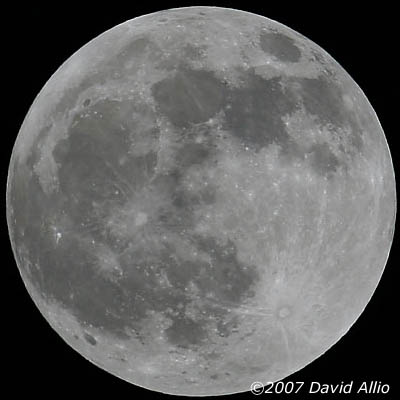In just a few days residents of the Earth are expected to see a Super Moon, according to reports from NASA. The full moon on May 6 is supposed to be 14 percent larger and 30 percent brighter than the average full moon. At perigee the lunar mass will be 356953 km from the Earth, making it the closest passing of the two masses for the 2012 calendar year.

Full Moon over Kauai | ©2007 David Allio
Every Full Moon, or for the occasional lunar eclipse, there are a bunch of lunatics who drag their cameras and telephoto lenses out of the bag without ever thinking about the subject. The Moon is a gray rock surrounded by a black void of space.
The proper exposure and color balance for a Full Moon is exactly the same as for daylight on the Earth. Cameras with built-in exposure meters usually get confused by the stark contrast between the reflected light of the Moon and non-reflective surrounding space. In most situations, a camera meter will try to balance the quantity of light and provide a reading that varies anywhere from two-to-five full f/stops. The smaller the Moon is in the frame, the greater the amount of probable exposure error by the meter.
Atmospheric conditions greatly affect the basic exposure calculation. Smog can affect the color temperature as well as reduce the amount of reflected light by one or more f/stops. Haze and clouds may have an even greater exposure impact.
When selecting shutter speeds, it is important to remember that the Moon is moving at a speed of over 2200 miles-per-hour. That movement will appear as blur when slower shutter speeds are selected.
The technical exposure data for this full lunar eclipse as seen from Puhi, Kauai, Hawaii, on Monday, August 27, 2007, is an aperture of f/8 and a shutter speed of 1/400th of a second at 100 ISO. The 560mm (720mm digital) focal length lens was supported by a monopod.
You must be logged in to post a comment.